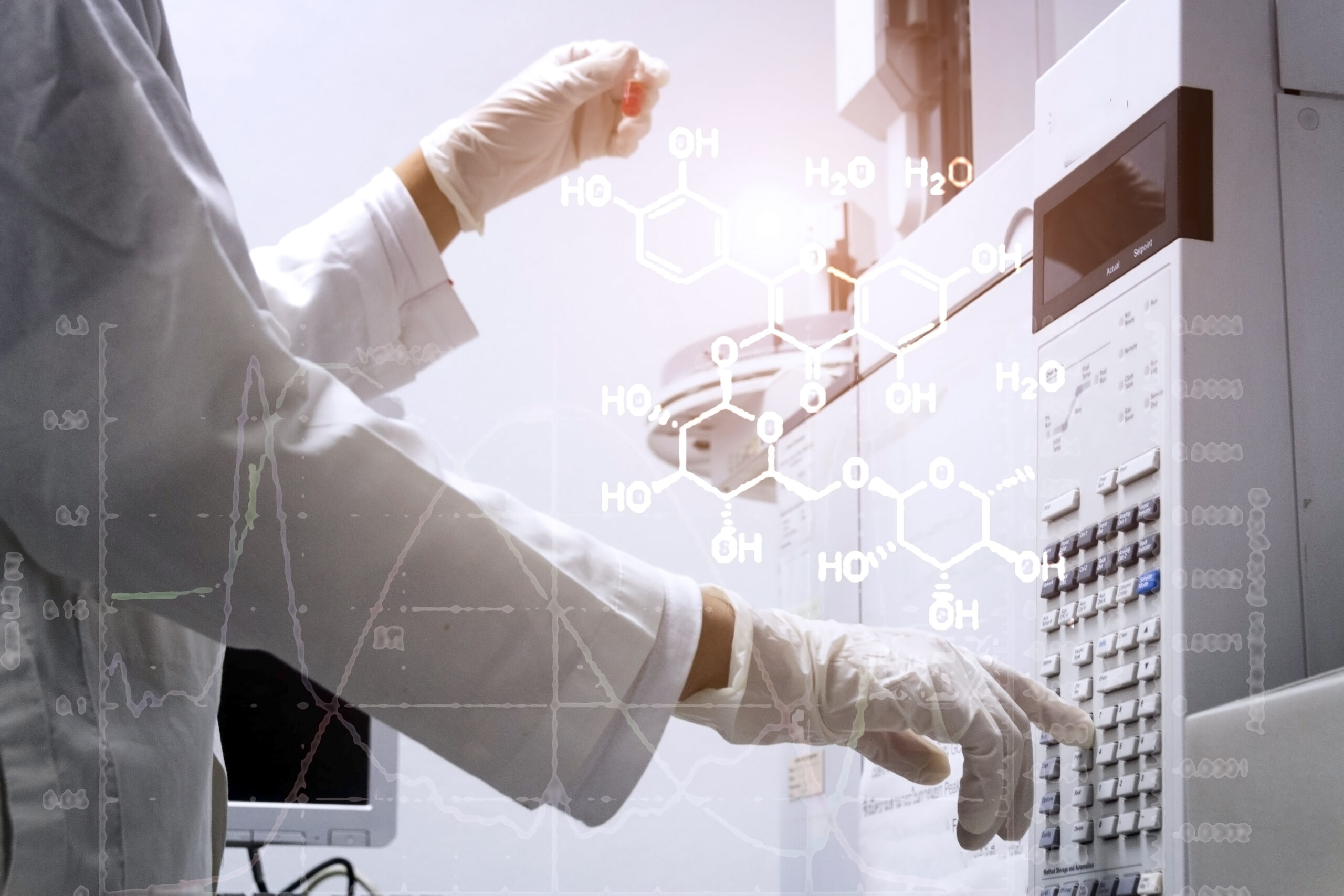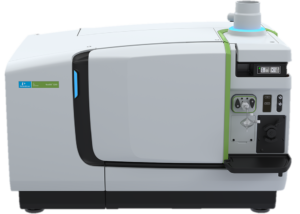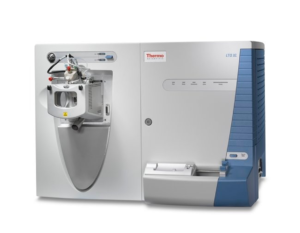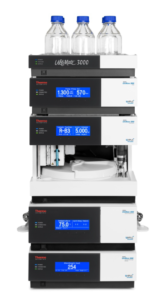
The CNOS Mass Spectrometry and Chromatography facility offers a cutting-edge collection of mass spectrometers and a chromatographic system with UV detection for the development of analytical methods, with high sensitivity for qualitative and quantitative analyses in the biomedical and environmental fields. The laboratory is available for the development of quantitative methods for biological and pharmacological target molecules (drugs and metabolites, small endogenous or exogenous molecules) or environmental pollutants (trace metal elements). It is able to investigate numerous analyte panels, using in house validated methods.

 Inductively Coupled Plasma-Mass Spectrometry (ICP-MS) is one of the most important spectrometric techniques. The NexION® 5000 multi-quadrupole ICP-MS – the first in its category to boast four quads – is innovatively designed to meet and exceed the demanding requirements of ultra-trace elemental applications. It takes ICP-MS performance beyond traditional triple quad to deliver exceptionally low background equivalent concentrations (<1 ppt, even in hot plasma) and outstanding detection limits, key to ensuring accurate, repeatable results. Plus, the NexION 5000 provides superior interference removal, phenomenal stability and unmatched matrix tolerance. NexION 5000 is a powerful method used to conduct quantitative and qualitative analysis.
Inductively Coupled Plasma-Mass Spectrometry (ICP-MS) is one of the most important spectrometric techniques. The NexION® 5000 multi-quadrupole ICP-MS – the first in its category to boast four quads – is innovatively designed to meet and exceed the demanding requirements of ultra-trace elemental applications. It takes ICP-MS performance beyond traditional triple quad to deliver exceptionally low background equivalent concentrations (<1 ppt, even in hot plasma) and outstanding detection limits, key to ensuring accurate, repeatable results. Plus, the NexION 5000 provides superior interference removal, phenomenal stability and unmatched matrix tolerance. NexION 5000 is a powerful method used to conduct quantitative and qualitative analysis.
Features of NexION 5000
ICP-MS detects elements instead of molecules. With the exception of a few elements (such as C, H, N, O, and the noble gasses), all elements can be detected. A specific element serves as a tag for the molecule of interest, thus enabling quantitation of the drug molecule in a complex matrix. The technique is highly linear and can be used quantitatively for a broad concentration range. Sample processing is relatively straightforward with high throughput resulting in fast turnaround times.
Furthermore ICP-MS is frequently used for limit tests of elements, trace elemental analysis, and formulation analysis.
The NexION 5000 is capable of performing multi-element analyzes. Using the ICP-MS, it is possible to measure multiple elements simultaneously in a single analysis.
Ideal Uses of NexION 5000
Our NexION 5000 is coupled with Single Cell application module capable of:
Technical Specifications:
Quadrupole Ion Deflector (Q0), First Transmission Analyzer Quadrupole (Q1), Quadrupole Universal Cell (Q2), Second Transmission Analyzer Quadrupole (Q3), Mass range: 1-285 amu, 2.5 MHz.Gamma di massa: 1-285 amu, 2,5 MHz
Resolution: Typical operating resolution 0.7 amu, custom resolution to <0.3 amu
Quadrupole peak hop (slew) speed: 1.6 M amu/sec
Quadrupole scan speed: 5000 amu/sec
 The Thermo Scientific LTQ XL™ Linear Ion Trap Mass Spectrometer provides accurate mass measurements (15 to 200 m/z; 50 – 2000 m/z; 200 – 4000 m/z) with improved resolution and high sensitivity (low fetomole to high attomole level). The instrument can accumulate, isolate and fragment ions by detecting them through its Secondary Electron Multiplier Detectors (SEM).
The instrument can perform different types of scans: Full scan (single mass scan (n = 1) which provides a complete mass spectrum); Selected Ion Monitoring (SIM) (the ions produced in the linear ion trap are accumulated and only the ions with a certain value of m / z are expelled from the ion trap); Selected Reaction Monitoring (SRM) (in the first phase a precursor ion with a certain m / z ratio is accumulated into the trap and further fragmented producing fragment ions, while all the other ions are removed. In the second phase of mass selection, the ions fragment is accumulated inside the analyzer, one or more ions with a specific m/z ratio are selected, the others are expelled from the trap); Consecutive Reaction Monitoring (CRM) (this multistage acquisition method (from n = 3 to n = 10), allows to select the fragment ion and further fragment it, obtaining MS3 or higher, with a consequent increase in specificity). Each further fragmentation step makes the identification of the compound more precise and allows the structural characterization of the molecules of interest.
Each additional fragmentation step makes compound identification more definite and enables structural characterization. The system offers molecular weight measurements with low sample volume consumption (nanoliter to microliter).
APPLICATIONS: Pharmaceutical, Forensic, clinical, environmental, food, quality control, proteomics, metabolomics
The Thermo Scientific LTQ XL™ Linear Ion Trap Mass Spectrometer provides accurate mass measurements (15 to 200 m/z; 50 – 2000 m/z; 200 – 4000 m/z) with improved resolution and high sensitivity (low fetomole to high attomole level). The instrument can accumulate, isolate and fragment ions by detecting them through its Secondary Electron Multiplier Detectors (SEM).
The instrument can perform different types of scans: Full scan (single mass scan (n = 1) which provides a complete mass spectrum); Selected Ion Monitoring (SIM) (the ions produced in the linear ion trap are accumulated and only the ions with a certain value of m / z are expelled from the ion trap); Selected Reaction Monitoring (SRM) (in the first phase a precursor ion with a certain m / z ratio is accumulated into the trap and further fragmented producing fragment ions, while all the other ions are removed. In the second phase of mass selection, the ions fragment is accumulated inside the analyzer, one or more ions with a specific m/z ratio are selected, the others are expelled from the trap); Consecutive Reaction Monitoring (CRM) (this multistage acquisition method (from n = 3 to n = 10), allows to select the fragment ion and further fragment it, obtaining MS3 or higher, with a consequent increase in specificity). Each further fragmentation step makes the identification of the compound more precise and allows the structural characterization of the molecules of interest.
Each additional fragmentation step makes compound identification more definite and enables structural characterization. The system offers molecular weight measurements with low sample volume consumption (nanoliter to microliter).
APPLICATIONS: Pharmaceutical, Forensic, clinical, environmental, food, quality control, proteomics, metabolomics
 The liquid chromatography (LC) permits the separation of the components of a sample based on differences in their affinity or retention strength for the stationary phase and mobile phase. The Ultra High Performace Liquid Chromatography System UltiMate™ 3000 HPLC provides excellent chromatograpic performance. The system is equipped with a Quaternary Standard Pump witch supports pressures up to 62 MPa (9,000 psi/620 bar) at flow rates from 0.2 to 10 mL/min; an high presion autosampler that supports injection volumes from 1 to 100 ul; a Thermostated Column Compartment (5 to 80°C) and a Diode Array Detector with high-resolution and wavelength range of 190 to 800 nm (accurancy ±1.0 nm, noise <±8 µAU).
The liquid chromatography (LC) permits the separation of the components of a sample based on differences in their affinity or retention strength for the stationary phase and mobile phase. The Ultra High Performace Liquid Chromatography System UltiMate™ 3000 HPLC provides excellent chromatograpic performance. The system is equipped with a Quaternary Standard Pump witch supports pressures up to 62 MPa (9,000 psi/620 bar) at flow rates from 0.2 to 10 mL/min; an high presion autosampler that supports injection volumes from 1 to 100 ul; a Thermostated Column Compartment (5 to 80°C) and a Diode Array Detector with high-resolution and wavelength range of 190 to 800 nm (accurancy ±1.0 nm, noise <±8 µAU).
Applications: Bio-pharmaceutical, pharmaceutical, environmental, forensic, quality control. Manufacturer: Thermofisher Scientific™ Instrument name: Thermo Scientific ™ DIONEX UltiMate™ 3000 ™